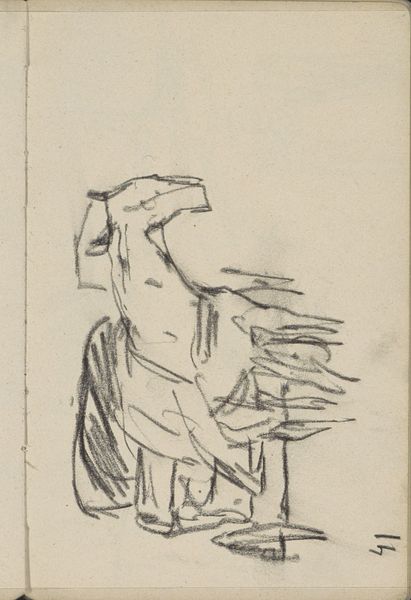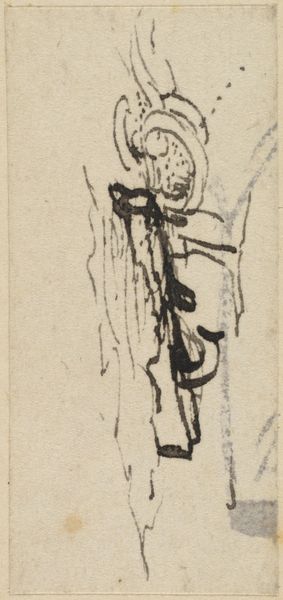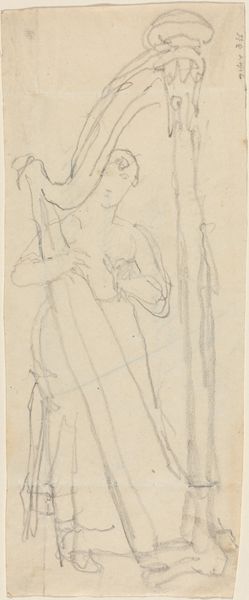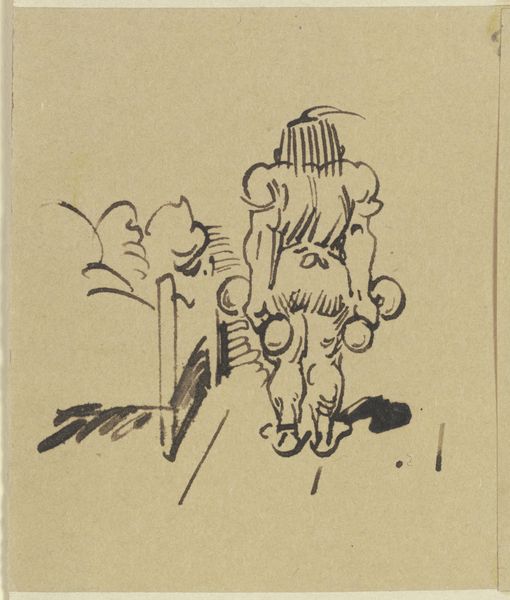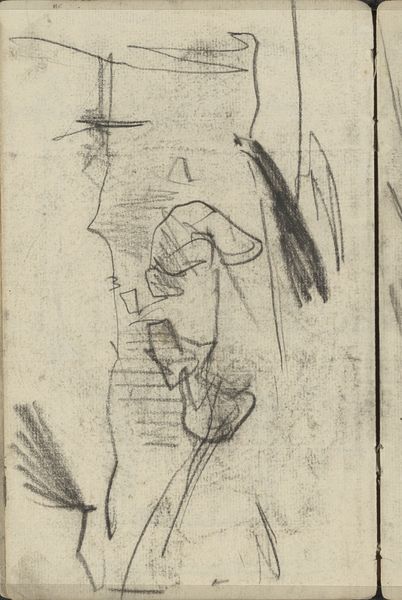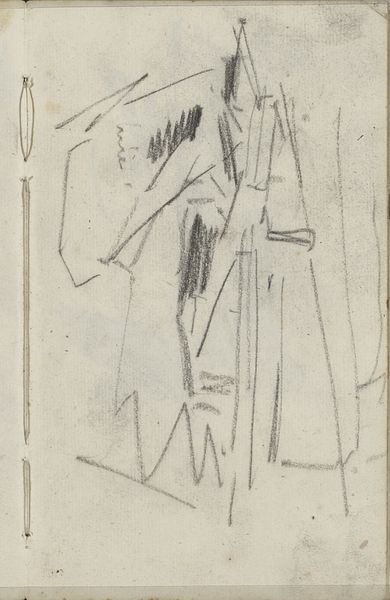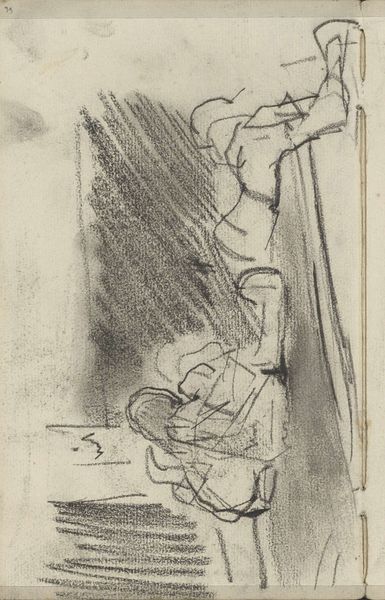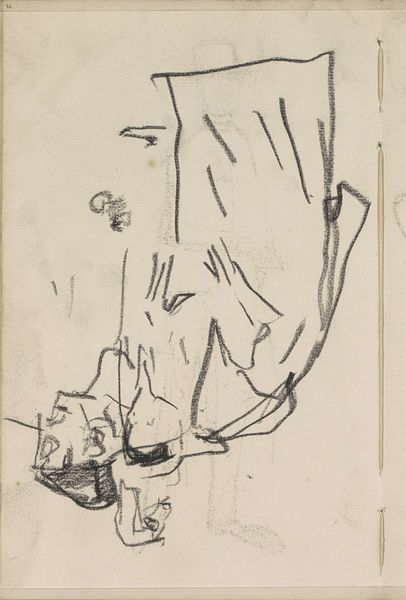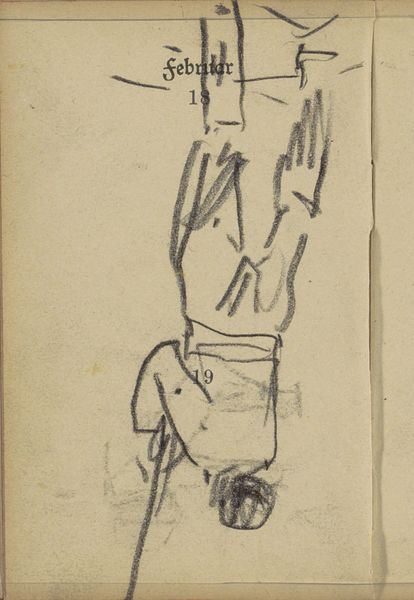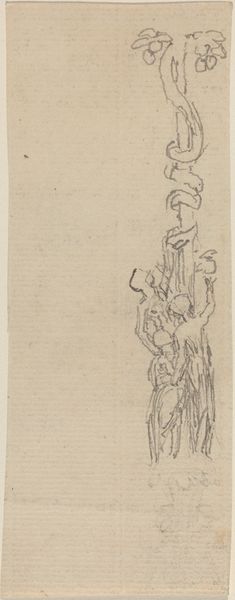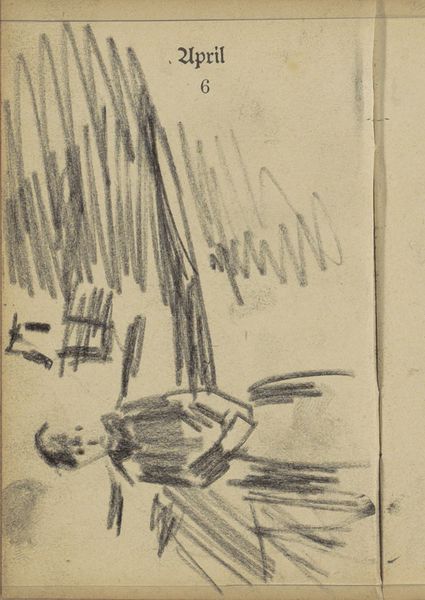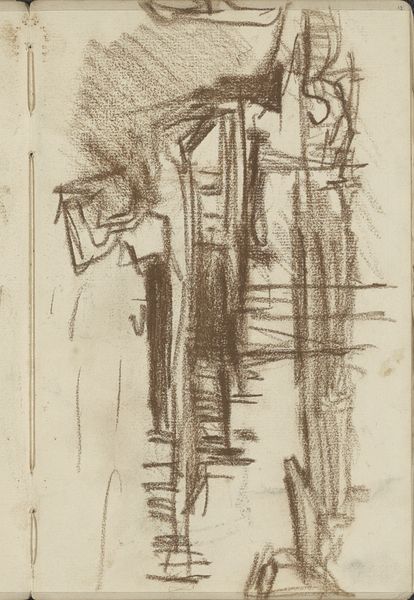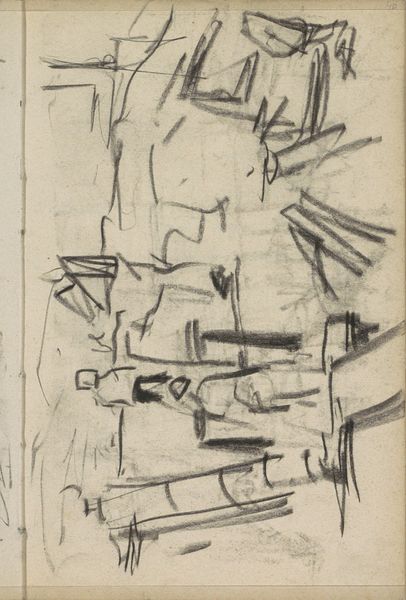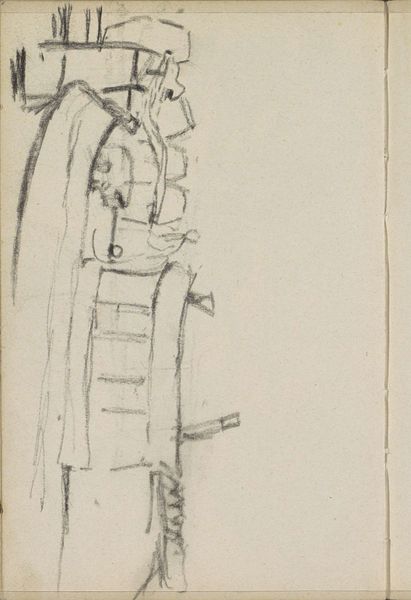
drawing, ink, pencil
#
drawing
#
ink
#
pencil
#
line
#
realism
Dimensions: overall: 6 x 2.8 cm (2 3/8 x 1 1/8 in.)
Copyright: National Gallery of Art: CC0 1.0
Editor: This is a quick sketch, titled "A Padlock," by Sir David Wilkie, made with pencil and ink. The thing that immediately jumps out is how minimal the rendering is; despite that, it really manages to convey the object’s form and, in some sense, its weight. How would you interpret this drawing? Curator: Notice first the confident linearity. The structural elements are boldly declared. Consider how the hatching around the object, the wood grain perhaps, plays with the relative starkness of the padlock itself. Wilkie isn't concerned with illusionism, but rather, he is accentuating the fundamental visual components. Do you observe how the positive and negative spaces interact to construct the image? Editor: Yes, the way the negative space kind of carves out the shape of the lock itself. So, is the focus simply on these basic artistic components, line, form, space? Curator: Precisely. It's about appreciating the internal relationships. The pencil and ink serve to define the object's physical being on the page, while the visible linework emphasizes artistic construction, devoid of narrative content. Note the modulation of line weight—this directs the viewer’s eye to different planes. Editor: It’s interesting how such a simple sketch can reveal so much about formal artistic intention. I’m so used to thinking about narrative that I usually skip over how line weight and negative space influence my perceptions. Curator: The material and its execution give us all we need to engage with it. Looking closely at the composition reveals the intentionality behind the simplest of subjects. Editor: It's definitely a good reminder to slow down and really *see* what’s on the page. Thanks!
Comments
No comments
Be the first to comment and join the conversation on the ultimate creative platform.
